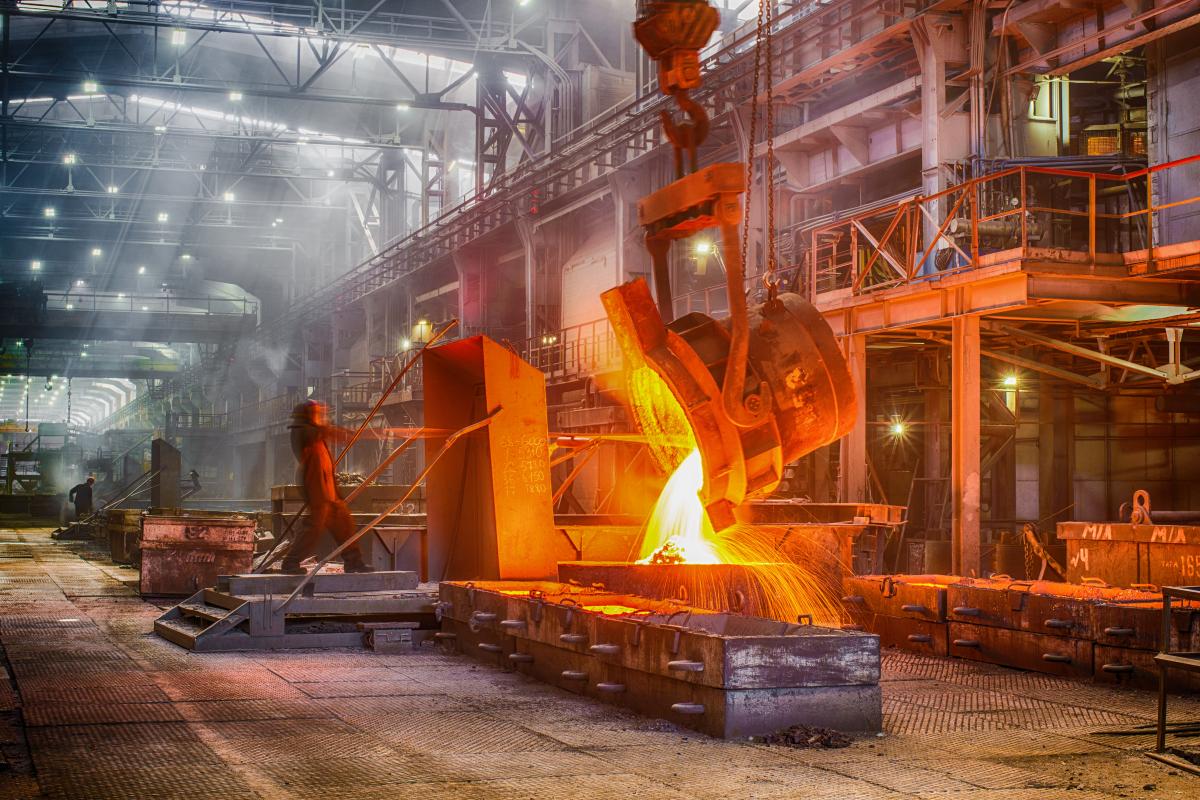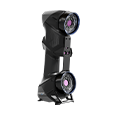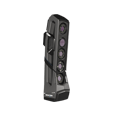Inspection for Machining Better Castings and Forgings

Challenges: How can manufacturers ensure that the raw castings and forgings include enough material to be machined?
The manufacturing industry faces many challenges in machining raw castings and forging. For instance, parts that do not present enough material for machining usually produce castings and forgings that do not meet customers’ requirements. This results in shipping non-compliant parts to clients, which can have severe consequences and lead to financial and legal issues. To protect themselves, clients demand quality inspection reports on each part. Carrying out dimensional inspections allows for the raw part on the machine to be aligned and oriented in order to guarantee enough material for the machining operation.
How can raw castings and forgings with potential issues that might not present enough material for the machining process be identified?
The manufacturing industry recognizes the benefits of intermediate inspections—before and after machining—to identify the castings and forgings that present potential issues. Pre-machining inspections can measure dimensions and validate if the material quantity is sufficient on specific surfaces. Post-machining inspections provide an overall view of the entire casting and forging, as well as inspecting the complete surface. The objective, of course, is to produce parts that meet the required tolerances.
How can entire surface profiles—not just discrete points—be checked to ensure that the parts fit within the required tolerances?
Inspections of castings and forgings require the acquisition of dimensions on parts of various shapes and complexity, potentially performed in any kind of environment. Optical technology enables operators to control more castings and forgings with more information and without surface preparation. Indeed, unlike touch probing, 3D scanning provides an overall view of the inspected part, not just discrete points. In analyzing the surface profiles, 3D scanners can validate whether or not the material is sufficient to proceed with machining.
How can the inspection time be shortened and production costs associated with scraps be reduced?
3D scanning enables operators to evaluate dimensional measurements and easily identify parts that do not meet the required tolerances. Therefore, they can mark raw parts as pass or fail before investing more time and money in them. Such quick validations save time and money because production of non-compliant castings and forgings is drastically reduced, often even entirely avoided.
Solutions: Portable, Simple, Fast, and Versatile 3D Tools for Inspections
With optical metrology, the manufacturing industry gets a portable, easy-to-use, quick, and efficient instrument for measuring, inspecting, and validating raw castings and forging before and after machining.
Portable because the measuring tool can be taken directly to the parts on the shop floor in the production environment. Thanks to portable 3D scanners, castings and forgings no longer have to be brought to the coordinate measuring machine (CMM). Precious time is saved, allowing for more inspections.
Easy to use because handheld 3D scanners offer a simple, digital Go-No Go feature. This way, castings and forgings that do not have enough material before machining can be easily identified, as can those that do not meet the required tolerances after machining. Thus, inspectors have the necessary feedback to mark the parts as pass or fail before investing in them further.
Quick because optical technology reduces inspection time. Due to the instant meshing, inspectors can check the surface acquisition by looking at their laptop computer or tablet screen. Therefore, the validation of dimensional variation is much faster than with traditional measuring instruments, which contributes to freeing up precious CMM time, solving bottleneck issues, and, eventually, avoiding the purchase of a second CMM.
Versatile because 3D scanners can not only perform the acquisition of any part directly at the foundry, but also at the customer’s premises, on the production floor, or at the supplier’s location. In addition, they can measure a variety of parts, regardless of size, shape, surface finish, geometry, and complexity, without surface preparation.
Benefits: Better Quality in Less Time and at Lower Costs with 3D Scanners
In the manufacturing industry, using optical metrology can help reduce the costs associated with scraps in order to produce parts of better quality while minimizing inspection time.
By performing intermediate inspections—before and after machining—castings and forgings presenting potential issues, such as insufficient material in critical areas and nonconformities with the CAD file, are clearly identified. This results in parts of better quality that meet the customer’s specifications and are within the required tolerances.
By inspecting castings and forgings with a portable 3D scanner before and after machining, the manufacturing industry can quickly identify those that do not have enough material, thus limiting the cost associated with their production, because these parts can be redirected and reworked before investing in them further.
With an acquisition rate of 1/2 million points per second, 100% of the surfaces can be inspected within a few seconds. Additionally, the part no longer has to be moved to the metrology lab for inspection. Therefore, inspections made with portable 3D scanners mean being able to inspect more parts faster and with more data while freeing up CMM time that can be used for more critical and valuable tasks, such as final inspections.
- Parts of Better Quality: By performing intermediate inspections—before and after machining—castings and forgings presenting potential issues, such as insufficient material in critical areas and nonconformities with the CAD file, are clearly identified. This results in parts of better quality that meet the customer’s specifications and are within the required tolerances.
- Reduced Production Costs: By inspecting castings and forgings with a portable 3D scanner before and after machining, the manufacturing industry can quickly identify those that do not have enough material, thus limiting the cost associated with their production, because these parts can be redirected and reworked before investing in them further.
- Shortened Inspection Time: With an acquisition rate of 1/2 million points per second, 100% of the surfaces can be inspected within a few seconds. Additionally, the part no longer has to be moved to the metrology lab for inspection. Therefore, inspections made with portable 3D scanners mean being able to inspect more parts faster and with more data while freeing up CMM time that can be used for more critical and valuable tasks, such as final inspections.
Thanks to optical metrology instruments, it is possible to produce raw castings and forgings with enough material for the machining process so that the final parts meet inspection standards.
In short, 3D scanners provide the manufacturing industry with more information and enable inspectors to measure more castings and forgings faster. Thus, precious CMM time can be saved and dedicated to final reporting, which is required by customers. Thus, 3D scanning helps to offload traditional CMMs, solve bottleneck issues, and avoid the costly purchase of a second CMM. 3D scanners not only help to free up CMM time, which is valuable for manufacturers, but also they are endorsed to minimize inspection time and production costs associated with rejected parts, resulting in parts of better quality.
Similar applications
Need more information about our solutions?
You have a specific question. You need the advice of a specialist. We are here to guide you.


